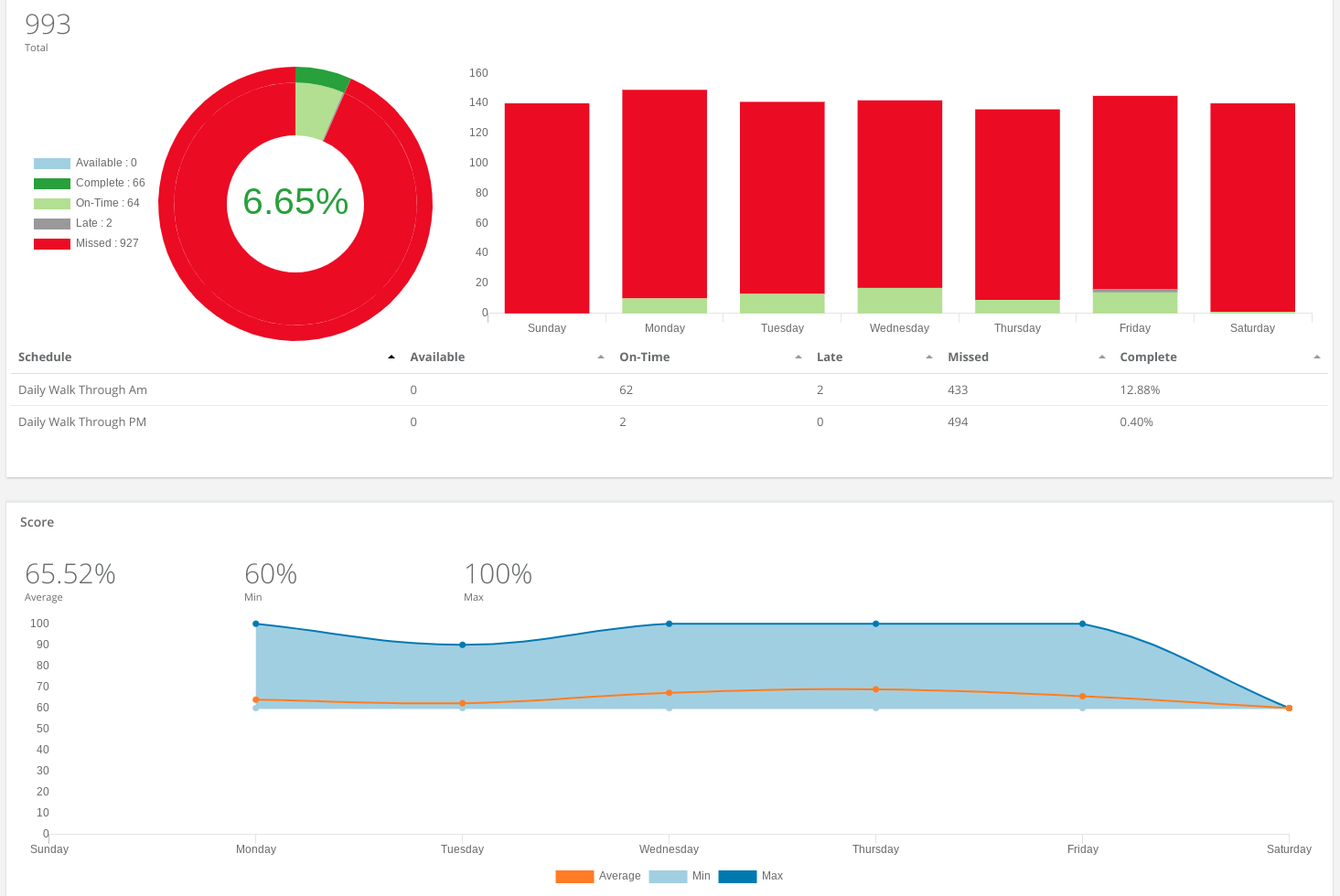Why You Need a 300 Log - OSHA Compliance Resource
--

If you're running a business with more than ten employees, you might be required to keep a 300 Log. So what is a 300 Log, and why does it matter? It's more than a form. It's a legal requirement under the Occupational Safety and Health Administration (OSHA), and it's your most effective tool for tracking workplace injuries and illnesses—if you're using it correctly.
Key Takeaways
- The OSHA 300 Log is a legal record of workplace injuries and illnesses.
- Not all businesses are required to keep the log; there are exemptions based on industry and size.
- Logging incidents helps spot trends, reduce risks, and improve safety.
- Failing to comply with OSHA recordkeeping rules can lead to fines and penalties.
- Accurate logs contribute to better decision-making and operational oversight.
Watch a Video Summary of this Blog:
What Is the OSHA 300 Log?
The OSHA 300 Log is part of a recordkeeping system designed to track serious work-related injuries and illnesses. It's not optional for most businesses. OSHA mandates that covered employers must record any incident that results in death, loss of consciousness, restricted work, job transfer, days away from work, or treatment beyond first aid.
So, what is an OSHA 300 log, exactly? It's a form that lists each qualifying incident, how it happened, what part of the body was affected, and what kind of work the employee was doing. It's an internal document, but OSHA can request it anytime. If you're in certain industries, you may need to submit your data electronically.
Treatment beyond first aid includes procedures like stitches, prescription medication, physical therapy, or any care provided by a physician or healthcare professional. Basic first aid, such as bandages, over-the-counter medications, or cleaning wounds, doesn't make an incident recordable.
Why the 300 Log Exists

What is the purpose of the 300 Log? It's about accountability and prevention. OSHA doesn't collect this data to file it away. It helps them spot hazards, monitor industry trends, and intervene when necessary. For businesses, it's a tool to evaluate workplace risks before they spiral into patterns that hurt workers and profits.
What is the purpose of OSHA Form 300 specifically? It creates a standardized method of tracking workplace safety. Without it, companies would have no consistent system for identifying recurring injuries or gaps in safety procedures.
Digitizing OSHA Logs with OpsAnalitica

Managing OSHA compliance doesn't have to mean drowning in paperwork. OpsAnalitica's OSHA Compliance Solution streamlines the entire process by digitizing Forms 300, 300A, and 301—making it easier to document, track, and submit workplace incidents in real time. Whether you're managing one location or hundreds, OpsAnalitica helps you stay compliant, reduce risk, and gain visibility across your operations.
5 Reasons Why You Need the OSHA 300 Log
1. It's Required by Law
Failing to maintain this log when required is a legal violation. OSHA can fine you. For serious violations, fines can exceed $16,131 per instance as of 2024. Penalties are adjusted annually, so it's important to check current figures on OSHA's website.
2. It Helps You Identify Unsafe Patterns
If you're seeing repeated incidents like back injuries from lifting or slips in one area of the floor, that's not random. Your 300 Log shows patterns, and patterns are warnings. Recognizing them early lets you fix problems before they escalate.
3. It Can Improve Labor Productivity
When employees don't feel safe, morale dips—and productivity usually follows. Injuries don't affect just one person. They ripple across teams, delay workflows, and create costly setbacks. Maintaining the log helps you track and reduce those impacts.
4. It Supports Operational Decision-Making
Companies that use the log effectively don't treat it as paperwork. They use it to inform operations management strategies. It's part of a broader system for tracking what's happening on the ground and improving what's not working.
5. It Can Shield You in a Dispute
If an employee files a claim or OSHA investigates your site, up-to-date logs offer protection. They show that you take incidents seriously and follow protocol. That kind of documentation matters.

OSHA 300 Exemptions: Do They Apply to You?
Not every business has to maintain an OSHA 300 Log. OSHA 300 log exemptions depend on company size and NAICS industry codes. Generally, if you have 10 or fewer employees during the calendar year, you're exempt.
Certain low-risk industries are also exempt, including:
- Retail clothing stores (NAICS 4481)
- Insurance carriers (NAICS 5241)
- Education support services (NAICS 6117)
- Real estate offices (NAICS 5311)
- Computer systems design (NAICS 5415)
- Accounting services (NAICS 5412)
You can view the full list of partially exempt industries in the official OSHA injury and illness recordkeeping and reporting requirements. But even exempt companies still need to report serious incidents like fatalities, hospitalizations, amputations, or eye loss. Those requirements always apply.
Related: Operational Excellence: What It Is
What to Include in Your OSHA 300 Log
Here's what should show up in your log:
- Case number and date of incident
- Employee name and job title (or redact for privacy cases like sexual assault, HIV exposure, or mental health conditions)
- Description of injury or illness
- Body part affected
- Whether the incident led to days away from work, job transfer, or medical treatment
It's also common to pair the 300 Log with Forms 301 and 300A. Form 301 gives more detail on each case. Form 300A summarizes your annual data and must be posted publicly from February through April.
Related: What Exactly Is An Operations Execution Solution?
How Long Should You Keep OSHA Logs?
You must keep logs for at least five years. They must be updated to reflect new information, like if a case worsens over time. Properly documenting work-related injuries can reduce incidents. Hiding the logs in a file cabinet won't cut it. If you're audited, recordkeeping is one of the first things OSHA checks.

Best Practices for Managing the 300 Log
1. Train the Right People
Whoever fills out the log must understand what counts as recordable. Guesswork leads to bad data and compliance issues.
2. Stay Consistent
Use the same approach when logging incidents all year. Switching classification methods midyear creates inconsistencies and ruins trend data.
3. Audit Internally
Do an internal review at least once a year. Catch missing fields, inaccurate codes, or skipped entries before OSHA does.
4. Use Digital Tools
Manual forms waste time and increase error risk. Digital platforms like OpsAnalitica reduce labor and simplify compliance tracking.
5. Connect Logs to Broader Strategy
Don't treat your logs as isolated documents. Use them to support safety efforts, improve performance, and guide proactive compliance.

The Business Impact of OSHA Log Neglect
Poor recordkeeping does more than invite OSHA scrutiny. It lets unsafe conditions persist. That can mean real injuries, lower morale, and increased costs. Even customer trust can take a hit if ongoing safety issues start to decrease customer satisfaction.
Operationally, last-minute paperwork and emergency fixes burn time and labor. Solid recordkeeping reduces stress and lets your team focus on actual work.
The Link Between OSHA Logs and Workers' Comp
OSHA logs and workers' comp claims aren't interchangeable. Some injuries may lead to comp claims but don't meet OSHA's recordability criteria. Others may be recordable without triggering a claim. Each case needs careful review under both systems to ensure full compliance.
Electronic Reporting Requirements
If you have 250 or more employees, or 20 or more in a high-risk industry (like construction or manufacturing), you likely need to submit Form 300A electronically. This goes to OSHA's Injury Tracking Application. The usual deadline is March 2.
High-risk industries include:
- Construction (NAICS 23)
- Manufacturing (NAICS 31-33)
- Agriculture (NAICS 11)
- Transportation and warehousing (NAICS 48-49)
- Utilities (NAICS 22)
Take the Next Step Toward OSHA Compliance
If managing all this feels overwhelming, you're not alone. Our OSHA compliance solution helps simplify the process, reduce risk, and support your team.
Final Thoughts
So, what is a 300 log? It's not just paperwork. It reflects how seriously you take workplace safety. The purpose of OSHA Form 300 is to protect your team and improve operations. It's not a box to check. It's a habit worth building.
Keeping it accurate helps you stay competitive, avoid fines, and run a safer, more efficient business.
Need a visual summary? Here's a simple checklist:
Common Recordkeeping Mistakes:
- Misclassifying incidents as non-recordable
- Forgetting to update logs when cases evolve
- Failing to post Form 300A during required period
- Not distinguishing between first aid and medical treatment
- Inadequate employee training on recordkeeping requirements
Extra Resource: For official training materials and reference guides, check OSHA's Recordkeeping page.



